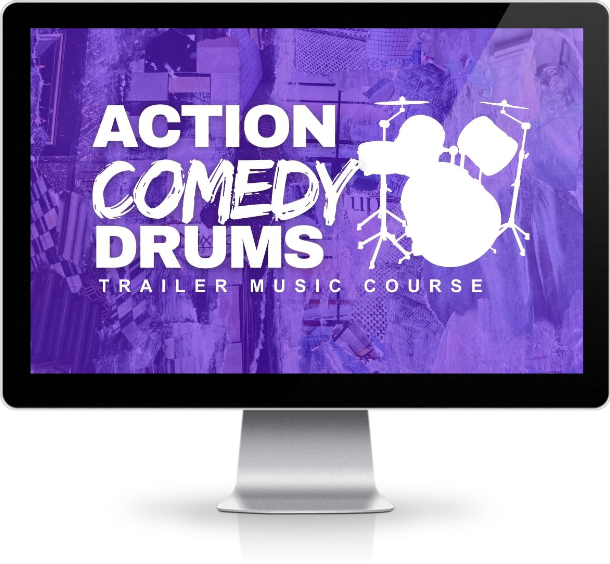A great many composers are not used to working solely with rhythm. So the idea of composing an entire piece using only drums and percussion might sound daunting.
When I write epic drum tracks like the one used in this trailer for Britney vs Spears I always include these 7 steps:
- Template
- Main rhythmic idea
- Sketch the structurefewer
- Ear candy
- Add variations
- Add the human element
- Go BIG!
Let's dive in ⤵️
Create Your Template
When writing for any trailer music project, you should start with this step so that you have all of the sounds you need to hand.
This saves you time and energy in the long run.
Set up your template with drums and percussion with some interesting sounds in there too (like zippers).
When I do this, I set up my sounds into stems/groups of similar sounds.
Something along these lines:
- Sticks & Clicks
- Hi Drums
- Mid Drums
- Low Drums
- Epic Hits,
- Cymbals
This will mean that when selecting instruments, you start to think of them in terms of where they will sit in the mix, and then how you will write for them.
Write Your Main rhythmic idea
Write a simple 8-bar rhythm.
This will be the foundation of your track.
I know it is really easy for me to say "Write a simple 8-bar rhythm" but the trick to this is not to overthink it - simple is often better.
I suggest you start with a mixture of quarter notes and eighth notes. This way you can start with a simple base.
Sketch Out Your Trailer Structure
Sketch your 3-4 act trailer music structure - the track is between 90-120 seconds long (15-30 seconds per act)
I suggest you sketch out the entire structure to reduce "blank page stress" - that feeling of stress that ends in writer's block.
There will be a part of you that will relax knowing that the structure of your track is already taken care of.
Plus, the sketch of the structure helps you to carve out the phrasing and shape of individual sections.
Remember, this is a sketch, it is not the finished track so don't worry about needing to make any changes to it at any point.
Add Ear Candy
I heard this phrase when I interviewed Chris Davey, the trailer music composer, on my Trailer Music podcast.
It is something that I was always aware of, but had never come up with a cool name for it, until then.
Ear candy; those little details you add to a track to make it more interesting, and useful, and grab the listener's attention - a sweet treat for their ears.
Ear candy can come in the form of:
- runs
- fills
- found sounds
- stopdowns
- short breaks
- surprise notes/chords
Add Interesting Variations
This is an extension of the ear candy.
Instead of it being small treats for the ears, they are larger changes that make the track feel like it is growing and changing.
It could come in the form of:
- Variation of the main pattern; slightly change the pattern to stop it from feeling "loopy"
- Variation of the chord progression; this could be used for a new section or just a handy way to end a section or track
- Variation for the final act; slightly change the main rhythm to make this last act feel like it has lifted.
Make It Feel More Human
With all of us using DAWs and samples to create our music, there is fewer and fewer real humans playing the music.
To change this, include details like flams, rolls, and fills that will make your track feel cool and more "human".
You can even change the timing of the notes to be less "on time" and change the MIDI note velocities to include emphasis and subtle variation.
I like to do this on block chords to make it feel like the notes are being played at slightly different times.
OR you can add a layer of live playing to lift the track and make it feel like a performance.
You Can't Get TOO Big!
In all my years writing trailer music, I don't think anyone has ever said to me, "This sounds too big".
Remember that for your final act/s.
Don't make the mistake of letting your track fizzle out, use the last 15-20 seconds to make it sound and feel MASSIVE - don't hold anything back.
p.s. If you want more detail, then you can check out my epic drum course:

Action Comedy Drums | Trailer Music Course
In this course, I show you how to write powerful drum kit-based tracks that have drive, power, and swagger. These tracks are used in action, comedies, and hard-hitting drama trailers.






